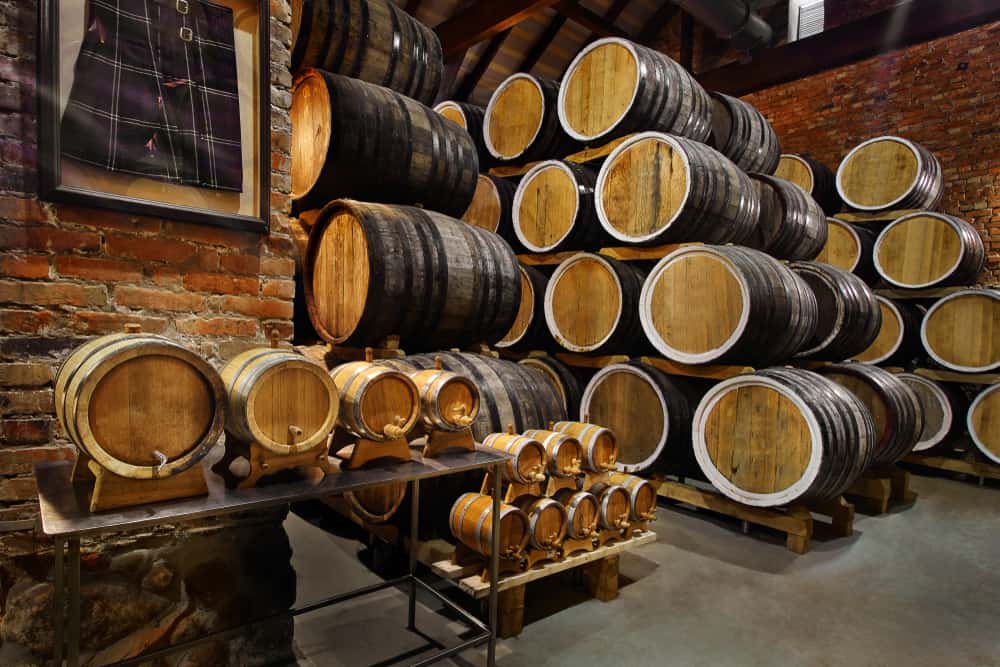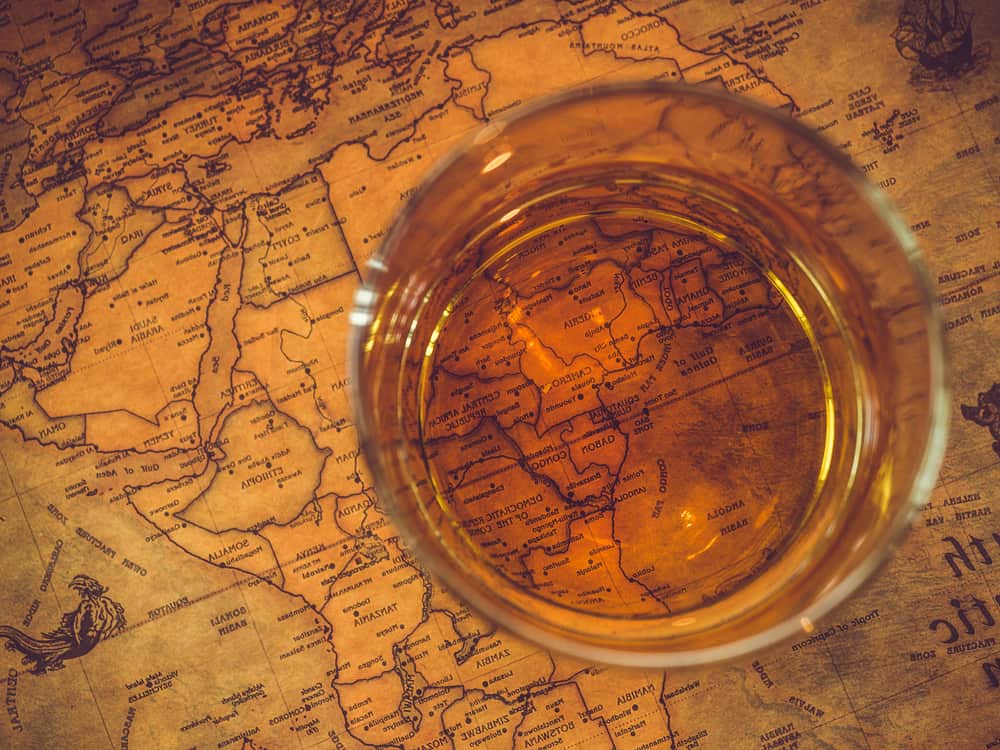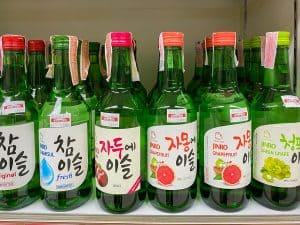
Which country is the largest producer of whiskey? Is it Scotland where the history stretches back a few centuries? Is it the USA where they also produce whiskey in various styles such as Tennessee whiskey, bourbon, or just plain whiskey?
The world’s largest producers of whiskey per year are:
- Scotland: 108 million cases,
- USA: 37 million cases,
- Canada: 21 million cases,
- Ireland: 7 million cases,
Generally, in every case of whiskey, there are 12 bottles (750ml).
We’ll examine some rules governing whisky/whiskey, the name difference, and the top whiskey producers worldwide.
Whiskey or Whisky? What Are the Rules?

While there is no international standard on the spelling, Scottish and Japanese producers prefer the spelling “whisky” without an e, while American and Irish distillers use the spelling whiskey.
There isn’t an internationally accepted definition of what whisk(e)y is. It is generally accepted as being a fermented mash made from grains such as barley, wheat, rye, or corn, distilled, and aged in oak barrels.
The rules governing Scotch whisky are hard and fast. It has to be made from a fermented mash of grains, aged in oak barrels for a minimum of three years and produced only in Scotland.
They subject single malts to even more rigid rules: production in a single distillery in Scotland. They still consider blends from the same distillery a single malt because it comes from a single distillery.
Scottish, Irish, and Canadian whiskeys are aged for a minimum of three years, while bourbon for two. Other producing countries have no minimum requirements.
The World’s Largest Whiskey Producing Countries
Scotland jumps automatically to my mind when I think of whiskey. But, apart from Scotland, other countries such as the USA, Ireland, and Japan also produce copious amounts of whiskey.
Let’s get into the details.
1. Scotland

Scotland stands out as the world’s largest producer of whisky. The figures show how much they produce.
- In 2021, every second of every day (there are 86,400 seconds in a day), 44 bottles (700 ml @ 40% ABV) were shipped to 180 countries worldwide. This amounts to 1.3 billion bottles of Scotch Whisky leaving Scotland annually.
- Scottish whisky accounted for 75% of all Scottish food and drink exports in 2021.
- There are around 22 million barrels of whisky maturing in warehouses around Scotland. They are patiently maturing aqua vitae for bottling.
- The biggest market for Scotch export is the USA, and shortly after them are France, Singapore, Taiwan, and Latvia.
- Scotland has the largest concentration of distilleries in the world. One hundred and thirty-eight, to be exact.
A Brief History of Whiskey in Scotland
Today’s whisky is vastly superior (and safer) to the medieval version. The first whiskeys were probably potent and sometimes even lethal because distillation was still in its infancy.
The first distillery named in official records is Ferintosh, owned by Duncan Forbes of Culloden in 1690. The history of whiskey is still shrouded in mystery. The first official written document, which refers to whisky in Scotland, dates from 1494 in the Exchequer Rolls.
Forward to the dissolution of the monasteries in the 16th century. Some monks and nuns received small pensions. But most were suddenly out on the streets and somehow had to make a living.
Their skills in distillation and medicine, along with producing alcohol, helped to cement whiskey’s reputation as a medicinal drink. It also became a way of surviving the harsh winters, and offering a dram to visitors became a way of life. Imposing taxes on alcohol seemed too much for the Scottish people.
Offering a drink was considered almost obligatory, but it had to be distilled first. The excisemen were excited because the number of distilleries grew, and they could make money from taxes. Indeed, imposing taxes on whisky production at the end of the seventeenth century took root.
Following the Act of Union in 1707 with England made matters worse. This pushed the production underground and opened up a thriving smuggling black market, which lasted for over 100 years.
With the passing of 1823’s Excise Act, something could produce legal whiskey for a license fee of £10, and they inscribed a standard rate per pure gallon of alcohol. The distilleries remained while smuggling calmed down. This time it would happen on American soil.
The American Prohibition Period (1920–1933) gave Scotch a tremendous boost. Scotch thrived in underground bars and speakeasies, and bootleggers grew rich from importing whiskey from Scotland. By 1936 the USA became the largest consumer market of Scotch.
Apart from Scotland, the USA, Canada, Ireland, and Japan are short on their heels in terms of whiskey production.
2. The USA

If we want to be extremely pedantic, we could argue that the USA is the world’s largest producer of whiskey–with an e–and leave Scotland out of the equation.
They export around 37 million cases of whiskey from the USA per annum. Jack Daniels, a bourbon, and Jim Beam, a Tennessee whiskey, account for 20 million of these cases.
The obligatory aging in new oak barrels gives American whiskey its recognizable sweet vanilla flavor. Barley, rye, maize (corn), and wheat are most commonly used in the USA for distilling whiskey.
3. Canada

Canadians somewhat mirror the Scottish in their whiskey production techniques: aging the whiskey for a minimum of three years and aging it in oak barrels. They also allow the addition of caramel.
They produce around 21 million cases of whiskey. Canadian whiskeys are noted for their smooth and light style, and most of their whiskey are blends. Other whiskeys, with a strong rye influence, are complex and rich in flavor.
4. Ireland

Irish whiskey was the most popular drink worldwide in the early twentieth century. Unfortunately, Ireland’s whiskey production, trade, and export were nearly decimated by the US Prohibition and the Irish War of Independence (1919–1921).
Ireland has 32 operational distilleries–far less than Scotland’s 138. Sales are growing fast for Irish whiskey, and 7 million cases are not to be sneezed at.
5. Japan

Japanese whisky deserves a special mention on this list. It started as a commercial venture in the 1920s and has grown into a sought-after whisky.
During the 2019 fiscal year, they produced around 157 million liters of whisky.
Conclusion
Scotland tops the list as the largest producer of whisky worldwide. The USA and Canada are close to Scotland, and Irish whiskey is gaining popularity again.
Although modeled on Scottish methods, Japan is also carving out its rightful place in the international whiskey arena.









